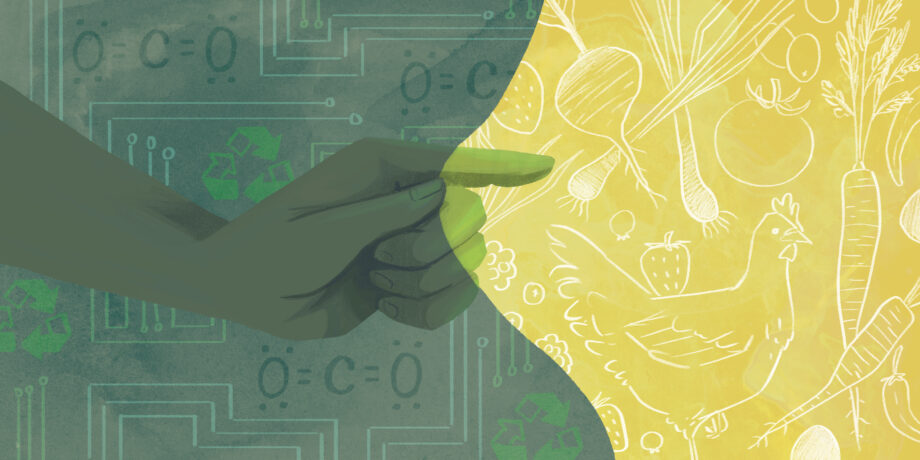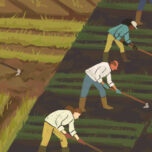July 26, 2023 — Mainstream conversations about transforming Western food systems in light of their adverse impacts on things such as climate and biodiversity have become overly dominated by a handful of relatively superficial technological matters. In the ongoing debate over the promises, merits and pitfalls of different sources of protein, for example, details like carbon emissions, productivity and efficiency have become the primary — and sometimes only — benchmarks used to evaluate and compare solutions. While these matter, there are additional factors that deserve as much, if not more, consideration.
In particular, two questions need to be asked far more often than they currently are if we want to transform our food systems in service of society and the planet.
First, how does a solution affect the connection among people, their food and where that food comes from?
Second, how does it affect who has control over, and who can participate in, food production and distribution?
People often ask me for my take on technologies such as lab-grown meats. Unfortunately, I often disappoint those looking for an ally or a simple answer by starting with an enthusiastic, “It depends!” This is because the principal challenges facing our food systems are not technological in nature. Rather, they are political and economic. Impacts on climate, biodiversity and poverty are all far more a product of how our food systems are organized than of the tools we are using.
We lose so much when we don’t interact with the plants, animals, people and places involved in cultivating and harvesting our food.
Our food systems are wreaking havoc on our climate, landscapes and seascapes because they separate us from one another and from the lands, waters, plants, animals and ecological processes that make food production possible. Synthetic fertilizers and pesticides mask the needs and health of the soil and surrounding ecosystem. Complex and lengthy supply chains, proprietary technologies,and closed-door facilities disconnect us from the unethical treatment of animals. Colonial systems of appropriation and development have privatized and commodified food, seeds and the land, leaving most of us beholden to the agendas of a handful of large agribusiness firms and a globalized supply chain that is vulnerable to all manner of disruptions. So, when it comes to evaluating the merits of new solutions, starting with an outcome such as greenhouse gas emissions or productivity per acre misses a much bigger picture.
Building Connections
Instead, the first question I ask of a new technology or practice is what it will mean for the relationship among people, their food and where it is produced. Will this new tool or technology further disconnect people from where, when and how food is produced? Or will it empower them to be more closely involved and invested?
Distancing and disconnection are among the most fundamental problems in our current food systems. We lose so much when we don’t interact with the plants, animals, people and places involved in cultivating and harvesting our food. We lose the opportunity to gain and grow our knowledge and understanding, whether of ecology and biology or our traditional cultural histories and practices. And we lose voice, because if we cannot see the mistreatment of animals, soil or water, we’re less likely to speak out against them.
More than food miles (though geography plays a part), distancing includes the loss of knowledge of and connection and moral commitment to the people and ecosystems that produce our food. Some technologies are inclined to create more distance between the eater and the eaten, while others increase involvement, awareness and knowledge. Lab-grown proteins seem a straightforward example of the former. Mainstream consumers are already quite distanced from the animals that provide the meats they buy at a grocer and from the lands on which those animals graze, the waters in which they swim, and the fields that provide their feed. Growing meat in a lab adds yet more steps and more levels of abstraction. It disembodies the protein, literally and figuratively, and obscures the life that made the food possible by producing placeless and lifeless products with no traceable connection to any rangeland, forest or fishery.
The cultural alienation from the rest of nature that Western society has developed already is widely recognized as one of the deepest underpinnings of our contemporary ecological crises. These technologies may have some merit in highly unique settings where there are few other options, such as building food systems for space travel. But at a time when we should be rebuilding our relationships with nature here on Earth, it is hard to imagine how lab-grown meat can do anything but worsen our problems.
People’s Power
The second question I ask is what the solution might mean for people’s rights and empowerment. Will it make it easier for those with power and wealth to enclose — gain control over — land, natural resources, food production, the supply chain and all of the decisions and standards therein? Enclosure and consolidation in the food system engenders inequity, erodes rights and disempowers people from having a say in their food system. And the more our food is enclosed and commodified, the more people are transformed from citizens to consumers, in that “voting with our dollar” becomes the only remaining venue for us to influence how our food systems operate, and a weak and inequitable one at that.
On this question, the answer regarding lab-grown meats is also relatively clear: Moving more aspects of how our food is produced into privatized labs using proprietary processes and technologies clearly poses a threat to people’s rights and well-being.
Emancipating our food systems from enclosure, and reconnecting consumers with ecosystems and the people working in and with those ecosystems to produce food, go hand in hand.
It is not necessarily the case that “high-tech” solutions always cause enclosure. People have experimented, for example, with open-source and public-funding models for genetic modification technologies that do not turn seeds into the intellectual property of corporations and have the potential to keep farmers with local ecological knowledge engaged in the process. But developing these novel social approaches requires that we remain hyper-attentive to the social and political power and implications of new technologies, especially in the context of capitalism.
Letting Values Drive Technology
Emancipating our food systems from enclosure, and reconnecting consumers with ecosystems and the people working in and with those ecosystems to produce food, go hand in hand. This has long been the mission of place-based smallholder and community food movements — to shorten supply chains and increase transparency and trust, and in so doing, empower people to produce and consume food in ways that are culturally appropriate, ecologically regenerative and socially just.
Yet, smallholder production is not a silver bullet: Different technologies and cropping systems thrive and fail at different scales, and just because our current large-scale practices for commodity crops are mired in enclosure and disconnection does not mean that necessarily has to be the case. For example, agricultural cooperatives, member-owned businesses where producers pool their resources in a specific area to generate greater productivity or competitive advantage than they can on their own, are a strategy for splitting the difference between the benefits of large-scale production and smallholder empowerment and livelihood security.
We need to get creative. Transforming our food systems is not merely a matter of this technology or that, this scale or that. It is first and foremost an exercise in setting and following our values for how, through food, we want to relate to one another and to the land. Getting caught up in debates about which product has the better life cycle analysis or lowest carbon footprint or highest calorie-per-acre yield is distracting us from solving the root causes of the challenges we face. If we start instead by attending to aspirational values — such as equity, empowerment, and respect and reciprocity with the natural world — we will better see the long-term transformative potential of solutions we already have in hand to build food systems that are more sustainable, regenerative and just.
Editor’s note: The views expressed here are those of the author and not necessarily of Ensia. We present them to further discussion around important topics. We encourage you to respond with a comment below, following our commenting guidelines, which can be found on this page. In addition, you might consider submitting a Voices piece of your own. See Ensia’s Contact page for submission guidelines.
Related Posts
Ensia shares solutions-focused stories free of charge through our online magazine and partner media. That means audiences around the world have ready access to stories that can — and do — help them shape a better future. If you value our work, please show your support today.
Yes, I'll support Ensia!




